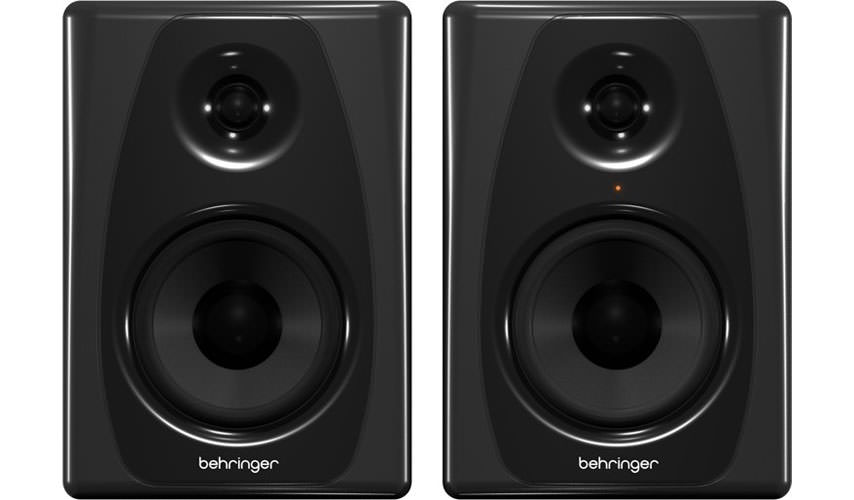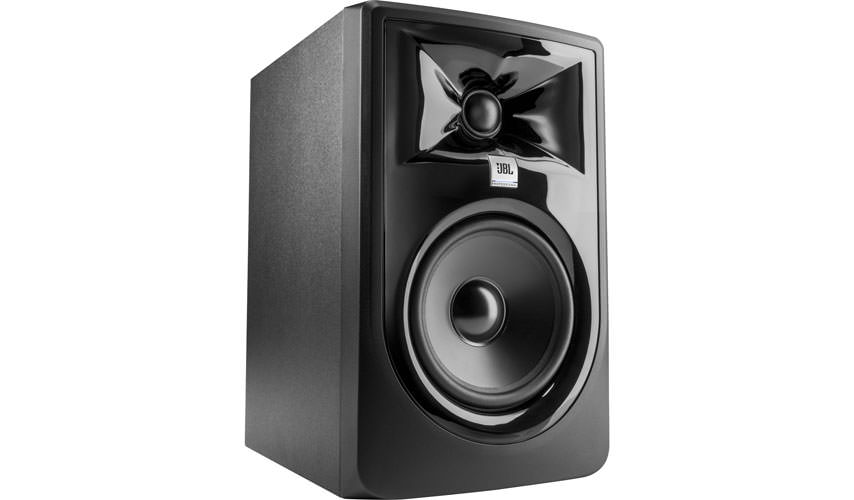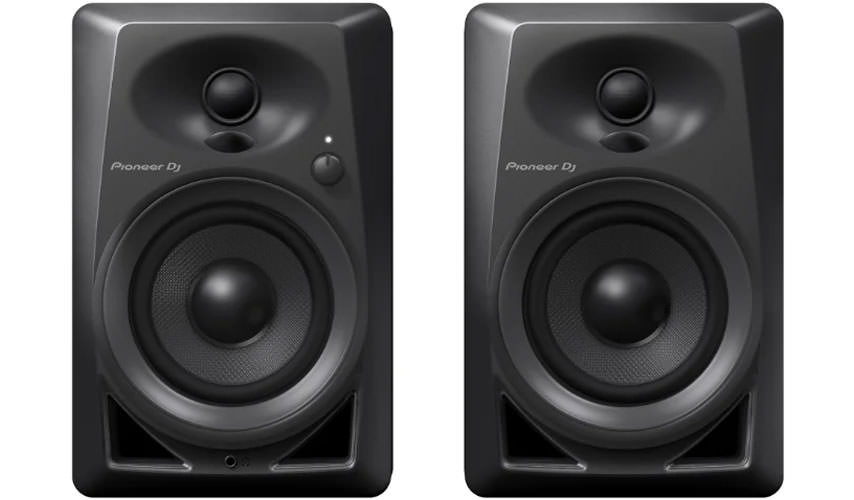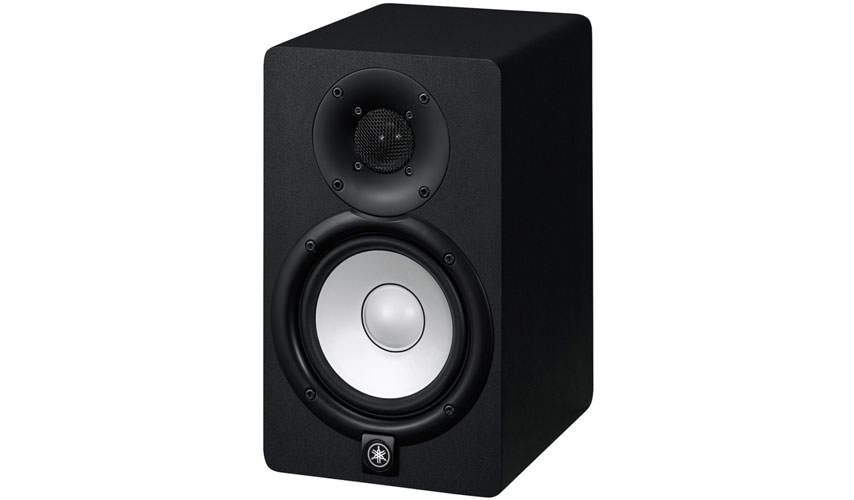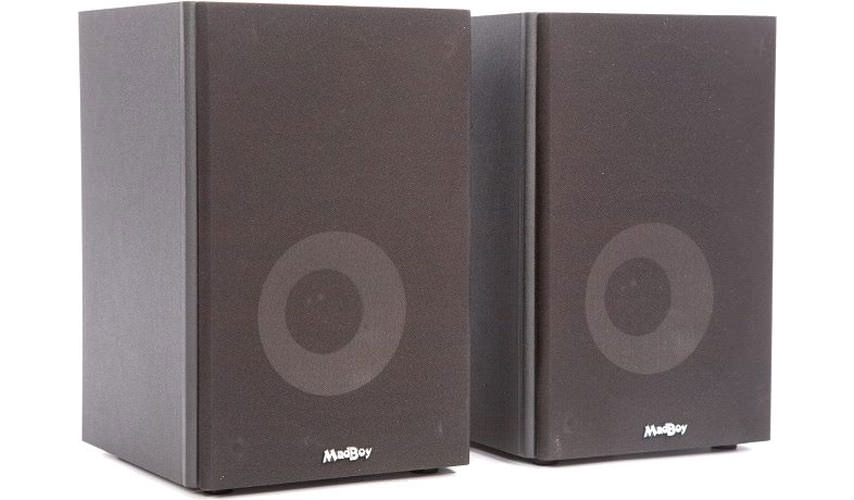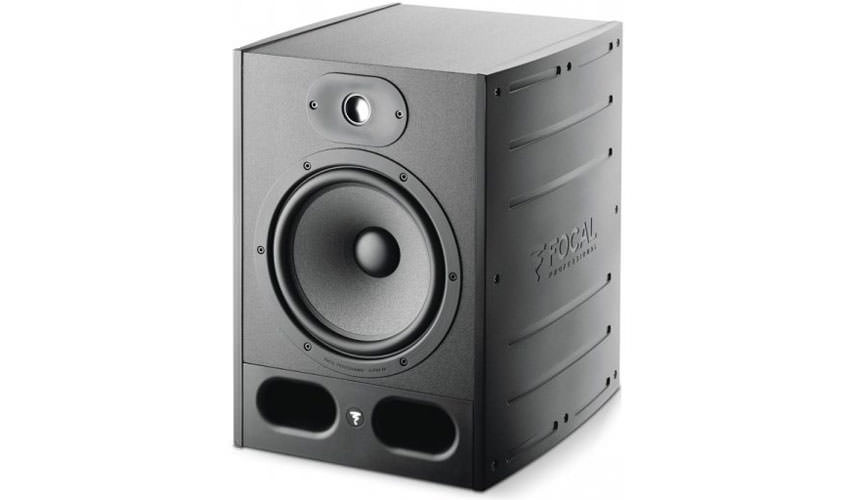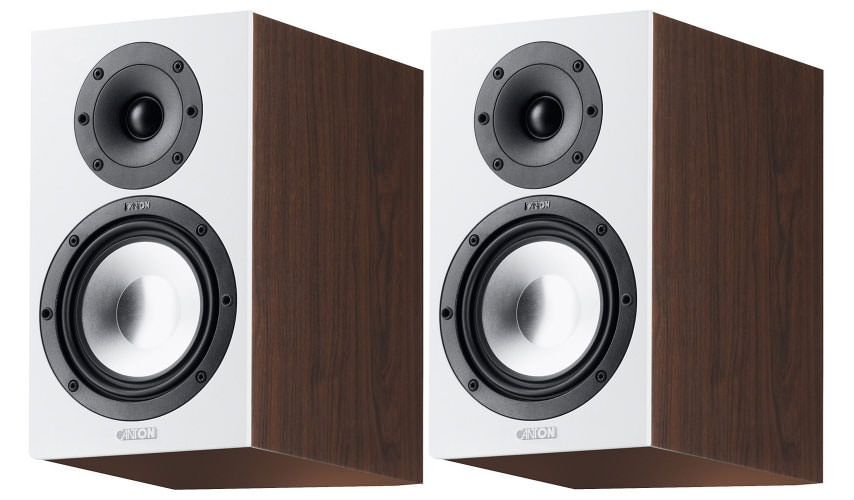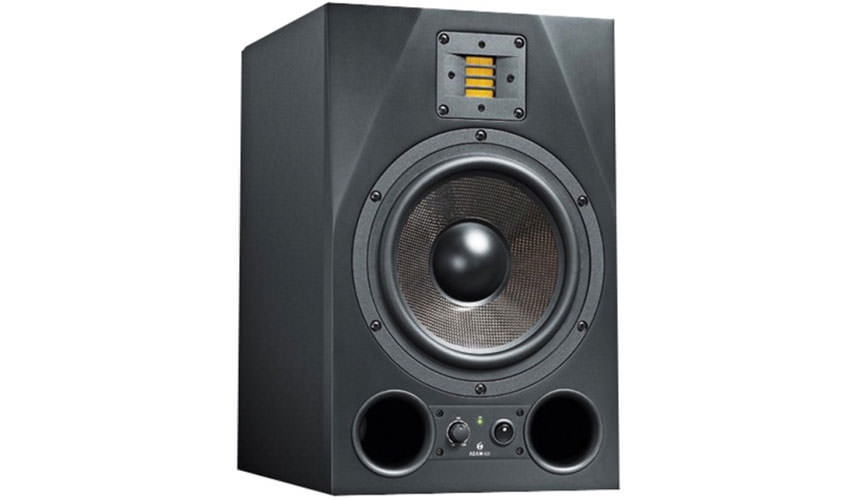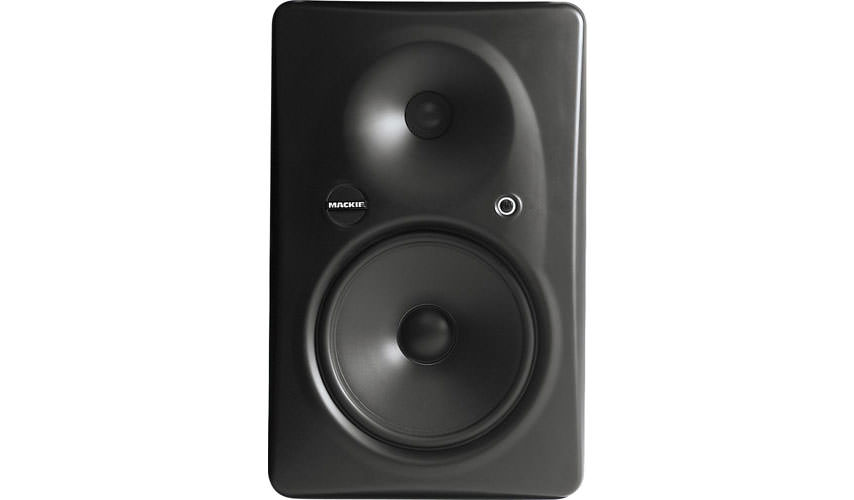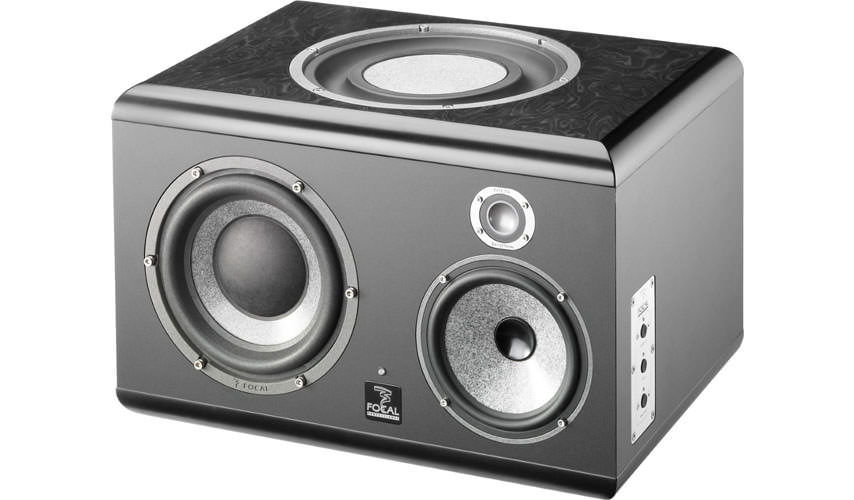Modern studio monitors differ in design power and functionality. Some are suitable for a mini home studio, while others are suitable for the activities of professional sound engineers. In this case, one cannot rely only on the price: cheap monitors are often used by professionals on a par with expensive ones. Collecting the rating of the TOP-10 best studio monitors, I tried to include acoustics from different price segments in it. Based on the opinions of experts and users, I was able to group the top 10 into 3 categories - budget, mid-range and premium. Each section of the rating contains a decent model for home and professional studio.
TOP 4 budget studio monitors
BEHRINGER STUDIO 50USB
The products of one of the largest manufacturers of musical equipment in the world are sold to more than 100 countries. STUDIO 50USB is a budget and popular version of active two-way studio acoustics. 2 speakers with bass reflex. The power of each channel is 75 W. The range of reproducible frequencies is 55–20,000 Hz. Case material - plastic. Jacks (6.35 mm), USB-port (type B) can be used as a simple speaker for a computer. Balanced XLR. Price - .
Pros:
- price;
- sound quality;
- compactness;
- the presence of a USB connector.
Minuses:
- body materials and assembly are imperfect;
- tangible level of its own noise;
- distortion of low frequencies at high volume;
- bass reflex rear;
- there is no support for the ASIO protocol.
A worthy, inexpensive example for setting up a home recording studio. For professionals, the capabilities of this acoustics will not be enough. But considering the price, I can recommend this model for home and small studios.
JBL 305P MkII
The name of this manufacturer is known to almost every music lover and audiophile. The JBL 305P MkII budget studio monitor is in great demand, but not only because of the price. Design features allow you to achieve the perfect sound:
- horn design - the emitter is located in the depth of a special bell; the result is a clearer sound transmission in a wide frequency range;
- work in Bi-Amping / Bi-Wiring formats - connection diagrams separate low and high frequencies to a perfectly flat frequency response;
- built-in bass reflex;
- equalizers to compensate for sound in different conditions.
Acoustics consists of 1 speaker with two speakers. Power - 82 W. The range of reproducible frequencies is 49–20,000 Hz. Connectors for connection - Jack (6.35 mm), balanced XLR. Body material - MDF. Price - .
Pros:
- price;
- sound quality;
- branded bass and bass;
- connection technologies - Bi-Amping / Bi-Wiring.
Minuses:
- glossy front cladding;
- there is own noise;
- the bass reflex is located at the back.
An acoustics that deserves the attention of not only those who are engaged in recording and mixing audio compositions, but also audiophiles with powerful musical equipment.Excellent detail and realism across the entire audio range, with a tangible emphasis on bass and flexible EQ controls.
Pioneer DJ DM-40
It differs from the two previous participants in the rating in its relatively low power - 42 W, with reduced customization options. Control is reduced to volume control, all other manipulations with sound can be done only with the help of third-party equipment, special software and equalizers. The speakers produce good, detailed sound by default, thanks in part to the positioning of the bass reflex ports on the front. The range of reproducible frequencies is 70–30,000 Hz. Connectors - 2 RCA and 3.5 mm mini-jack for headphones. Price - .
Pros:
- price;
- build quality;
- automatic shutdown / inclusion;
- volume control on the front panel;
- headphone output;
- front location of the bass reflex.
Minuses:
- mediocre sound quality compared to competitors named in the rating;
- meager control options - only volume control;
- no XLR, Jack (6.35 mm) connectors.
With all due respect to the manufacturer, I cannot recommend this model for studio use: there is not enough volume reserve, there are no necessary connectors for connecting to studio equipment, and the sound quality is low. It is suitable as multimedia speakers - for this purpose, the performance will be sufficient.
YAMAHA HS5
The model of the world famous Japanese manufacturer, very popular in the budget segment. The package includes 1 speaker with 2 built-in speakers, amplifier, bass reflex and 2 sound bands. Power - 70 W (near-field monitor). The range of reproducible frequencies is 54–30,000 Hz. Connectors - Jack (6,35 mm), balanced XLR. Price - .
Pros:
- price;
- materials and build quality;
- sound quality.
Minuses:
- the power-on indicators in the form of a corporate logo are too bright;
- not enough bass;
- susceptibility to electrical noise.
Ideal for home and small recording studios. With a flat frequency response, although some users complain about the lack of bass. In this context, the JBL 305P MkII has priority, but for mixing music I still recommend the YAMAHA HS5 - a balanced sound immediately gives out all the flaws in the recording.
TOP-3 middle price segment
Madboy BoneHead 206
Active two-way speaker system with a power of 50 W from a Chinese manufacturer. It reproduces the frequency range from 60 to 20,000 Hz, but is inferior in this indicator to the budget YAMAHA HS5 and Pioneer DJ DM-40. The main advantage against the same Pioneer DJ DM-40 is good sound. It has a protective grid, a line-out through which (theoretically) the acoustics can be supplemented with a subwoofer. But even so, I count the price in overpriced.
Pros:
- the presence of a protective grill;
- line-out;
- sound quality;
- compactness;
- lungs.
Minuses:
- price;
- poor control - only volume control;
- no XLR and Jack connectors (6.35 mm);
- a small margin of volume.
The model is rather intended for domestic use, does not require powerful equipment, and performs well with karaoke systems. At the same time, for a studio, especially a professional one, this acoustics is not suitable.
Focal Alpha 80
Bass-reflex studio monitor from one column with two speakers with a total power of 140 watts. Available in two colors - black and vinyl. It features balanced sound, flat frequency response over the entire range from 35 to 22000 Hz. Includes RCA and balanced XLR connectors. Price - .
Pros:
- sound quality;
- materials and build quality;
- design;
- the possibility of sound correction.
Minuses:
- short power cord;
- own noise at high volume;
- no Jack (6.35 mm);
- the backlight of the operation indicators (company logo) is too bright;
- goes into sleep mode at low volume.
An excellent option for a recording studio in this price segment. Produces an honest sound, on the surface - all musical and sound flaws. If you buy acoustics for home, you can save money: a good alternative is BEHRINGER STUDIO 50USB: its advantages are a USB connector, it costs three times less.
Canton GLE 436
Passive acoustics of the German brand with a power of 180 W (two speakers of 90 W each). Can be mounted on a stand to save space and sound realistic. The reproducible frequency range is 38–30,000 Hz. The sound is clean, balanced, but the bass reflex is brought back - it is important to take this fact into account when placing the acoustics. Price - .
Pros:
- sound quality;
- design;
- good materials and build quality.
Minuses:
- external amplifier required;
- not enough midrange.
Good acoustics for the home. It is declared by the manufacturer as homemade. You can use it as a monitor in a home studio; professionals should take the Focal Alpha 80 or one of the premium segment representatives.
TOP-3 premium segments
Adam A8X
Monitor two-way acoustics of the German brand with a power of 200 W. The column is equipped with a 50 W tape high-frequency emitter, a 150-watt midwoofer, a bass reflex, which provide a perfectly flat frequency response in the frequency range 38–50,000 Hz. Feature - separate amplification of bass and treble. There is near-field monitoring. Connectors - RCA, balanced XLR. Price - .
Pros:
- sound quality;
- tape emitter;
- phase inverters in front;
- possible vertical or horizontal arrangement.
Minuses:
- price;
- no magnetic protection;
- you need a quality sound source.
Excellent acoustics for home and professional studio. Versatile: suitable for playing and recording sound. The only stop factor in buying is the high price, but it is justified.
Mackie HR824
Two-way studio monitor with separate amplification of LF and HF (150 and 100 W, respectively). This makes it possible to adjust separately low and high frequencies within the range of reproducible frequencies - 45-22000 Hz. Another feature of the model is the absence of a phase inverter, instead of it there is a passive radiator. For connection, the device provides connectors: RCA, TRS and XLR, jack 6,3 mm. Price - .
Pros:
- sound quality;
- passive emitter;
- perfectly flat frequency response;
- fine tuning of HF and LF;
- adjusting the twitter level.
Minuses:
- price;
- the case is easily soiled, easily scratched.
Studio monitor for professional sound engineers, large recording studios. For a home studio, you can purchase the Adam A8X and save an order .
Focal SM9
The only 3-band studio monitor in the rating. This is an acoustic center, consisting of two monitors, enclosed in one body. Power - 600 W. The tweeters, midrange speakers, midwoofer and passive radiator allow this equipment to deliver the ideal frequency response, which is necessary for recording and mixing sound. The design feature and the implementation of Bi-amping technology provide separate adjustment of bass and treble. The monitor uses unique materials and technologies:
- the dome of the HF driver is inverted, made of beryllium;
- the passive radiator is equipped with a W-shaped composite bass resonator;
- the emitters use a three-layer material - glass - foam - glass;
Price - .
Pros:
- sound quality;
- power;
- Bi-amping support;
- passive emitter;
- near / middle field monitoring.
Minuses:
- price;
- dimensions and weight.
The technique is ideal for professional recording studios, the standard of quality for many sound engineers. In a home studio, such a monitor would be too massive and powerful. A more reasonable solution in terms of price and ergonomics would be the Adam A8X.

